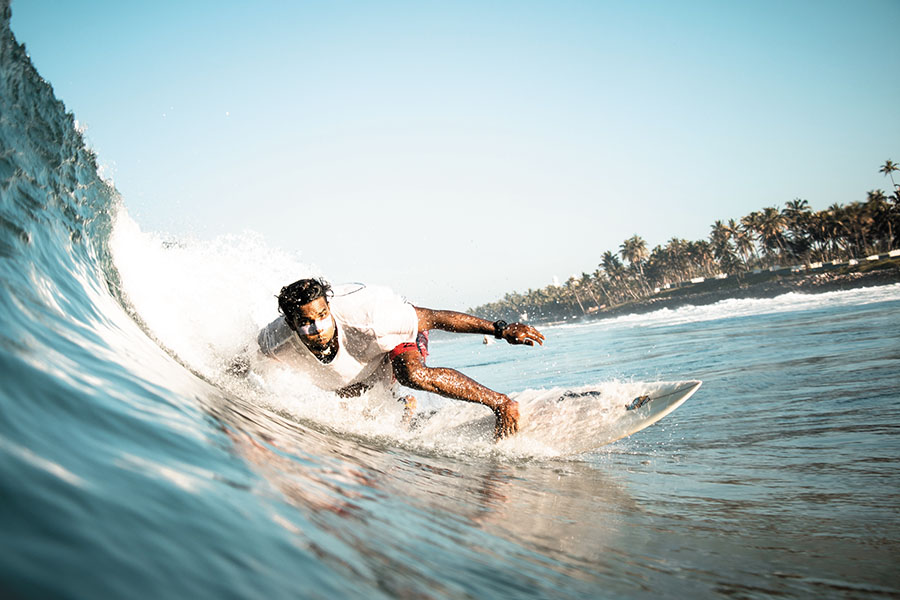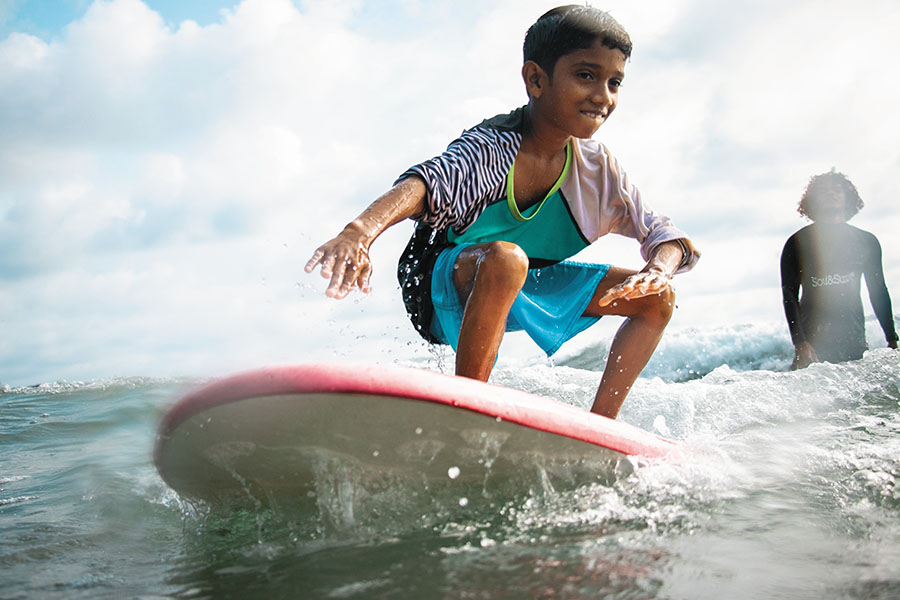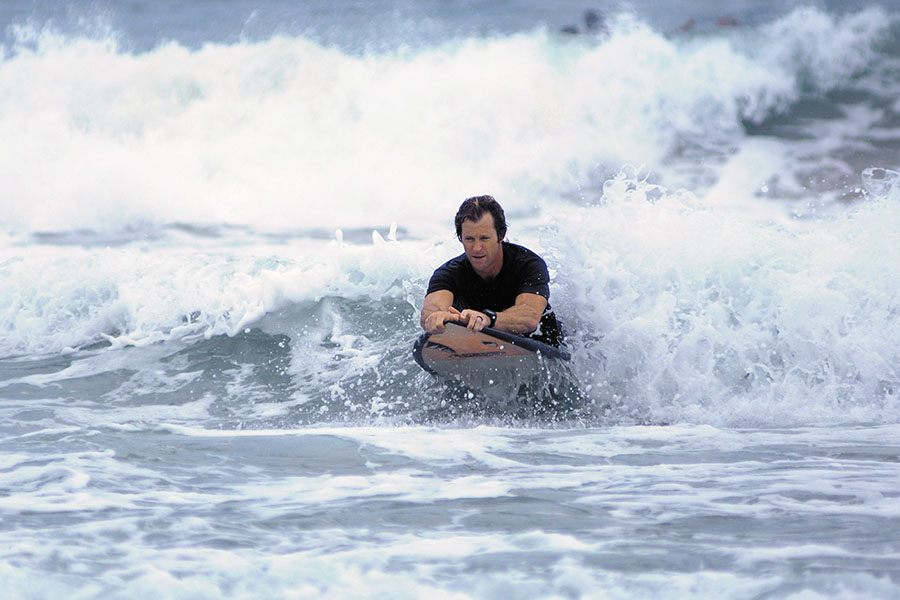
Surfing is gaining ground in India—just not among Indians
India's coasts are attracting professional surfers from countries as far as Norway and Switzerland, but locals are yet to embrace the waves
 Verghese Antony, head surf instructor at Soul and Surf, rides the waves in Varkala, Kerala
Verghese Antony, head surf instructor at Soul and Surf, rides the waves in Varkala, Kerala
Image: Jamie Mitchell
 Advanced surfers wait inside the sea for the right swell and waves
Advanced surfers wait inside the sea for the right swell and wavesImage: Jamie Mitchell
 A boy learning how to surf under the guidfance of local surf instructors
A boy learning how to surf under the guidfance of local surf instructorsImage: Jamie Mitchell
 Former South African cricketer Jonty Rhodes, also known as the ‘Surfing ambassador for India’ surfs near Kovalam in Kerala
Former South African cricketer Jonty Rhodes, also known as the ‘Surfing ambassador for India’ surfs near Kovalam in Kerala(This story appears in the 28 February, 2020 issue of Forbes India. To visit our Archives, click here.)
Post Your Comment
Comments 1
-
 P.S.Ashok
P.S.AshokJonty Rhodes comes to Kovalam near Chennai almost every year as an Ambassador for Surf Turf, Covelong Point (Kovalam near Chennai), not the Kovalam in Kerala. Can you please check your article for accuracy.
on Feb 28, 2020














